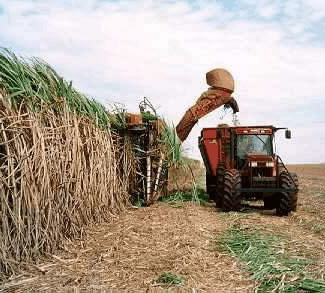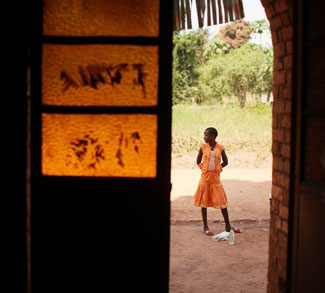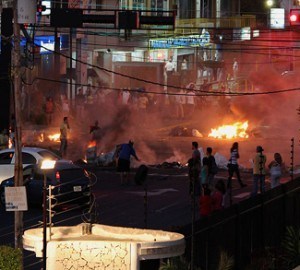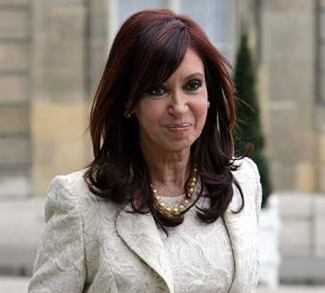Brazil, the world’s sixth largest economy, currently faces significant challenges in its attempt to control inflation and combat “Dutch disease”.
On September 27, 2010, Brazilian Finance Minister Guido Mantega used the term “currency war” to describe the nation’s battle against the influx of foreign investment capital. The Brazilian real has increased in value by approximately 40% against the USD in the last two years which has led to a steady decline in Brazil’s industrial and manufacturing sectors.
This was evident in January when the country posted a 2.1% decline in industrial productions from the previous month. Many economists – including Edmar Bacha (one of the founding fathers of the real) – argue that the discovery of large pre-salt oil reserves off Brazil’s coast, coupled with a rising currency, will inexorably lead to an incurable case of Dutch disease unless preventative measures are put in place by the government.
The expression Dutch disease was coined by The Economist in 1977 to describe the drastic decline of the manufacturing industry in the Netherlands following the discovery of large natural gas reserves off its coast in 1959. It is now frequently used in economic circles to refer to the recurring affliction many resource-rich nations face.
When a significant segment of a country’s economy is based around raw material exports, inflows of foreign capital tend to artificially raise the value of the domestic currency. The result is inflation and an increased reliance on international savings to finance growth. In theory, capital flows from developed nations should be welcomed in developing economies like Brazil. After all, foreign capital can improve social welfare and increase industrial diversification. But, in practice, the negative effects of a commodity based economy often outweigh the positive.
Dutch disease is not a new phenomenon in Brazil. Whether sugar, coffee, gold or rubber, the Brazilian economy has frequently been a prisoner of the boom and bust nature of commodities. Since its independence in 1825, Brazil has defaulted on (or “restructured”) its debt a staggering seven times. Indeed, it would be more appropriate to call the economic phenomenon ‘Brazilian disease’ considering the nation’s long history of economic turmoil.
Of course, the Brazilian economy of today is significantly different from the Brazil of the past. Its economy, which for centuries has been based on the exportation of a “small number of primary products,” now reads like a weekend shopping list. Brazil is the world’s leading exporter of poultry, beef, orange juice, coffee, and sugar and the world’s second leading exporter of soybeans and iron ore. In terms of monetary value, its top five exports are iron ore, oil & fuel, transport equipment (aircraft), soy, sugar, and ethanol.
Despite Brazil’s impressive portfolio of export commodities, economists remain concerned – largely because of the recent discovery of the 800 km pre-salt deep water oil reserves off the Brazilian coast. In a recent Financial Times article, former Petrobras President Sergio Gabrielli, estimated that the oil industry will grow from around 10% of GDP to an astounding 25% in coming decades. Whether this unprecedented project – estimated to attract 1 trillion (USD) in capital investment over the next decade – turns into an economic windfall or an economic oil spill for the Brazilian people will largely depend on the government’s economic decisions in the next few years.
On March 13th the Brazilian government amped up its protective measures, and broadened its tax on financial operations (IOF) by levying a 6% tax on foreign loans and bonds that exit Brazil within five years. According to Mantega, the goal is to curb “the inflow of speculative capital” that enters Brazil seeking to capitalize on the difference between interest rates in developed countries and Brazil. The IOF may well contain inflation for the 2012 financial year: the real is currently hovering at approximately (BRL) $R 1.8 to the USD (from a high of (BRL) $R1.53 in July 2011) and is expected to plateau at (BRL) $R2.0 to the dollar by the end of the 3rd quarter.
Regardless of whether Brazil’s manufacturing sector returns to previous levels of production or continues to decline, the price of commodities should remain stable in the short-term. As an economic immunization shot, the Brazilian government might heed the advice of legendary economist Edmar Bacha who recommends creating an oil sovereign fund – in the Chilean model – that would function as an economic buffer protecting the nation against commodity volatility.
If the Brazilian government fails to implement significant economic safeguards, there is the unpleasant possibility that the country’s Dutch disease, currently in remission, may indeed recur.




